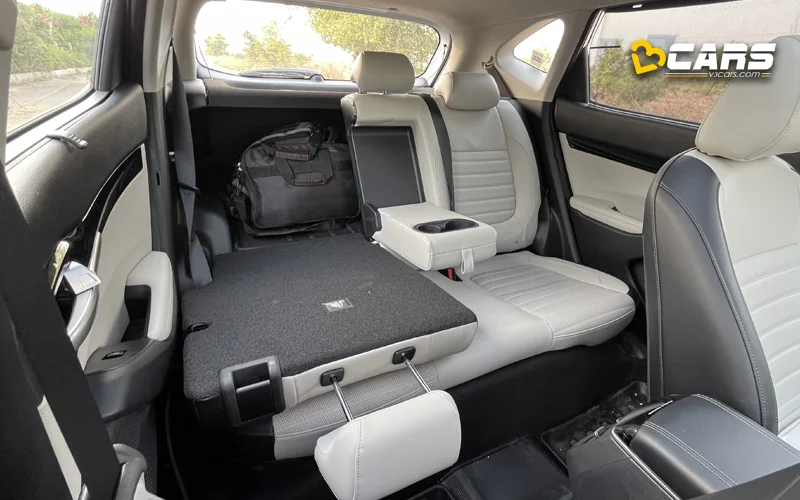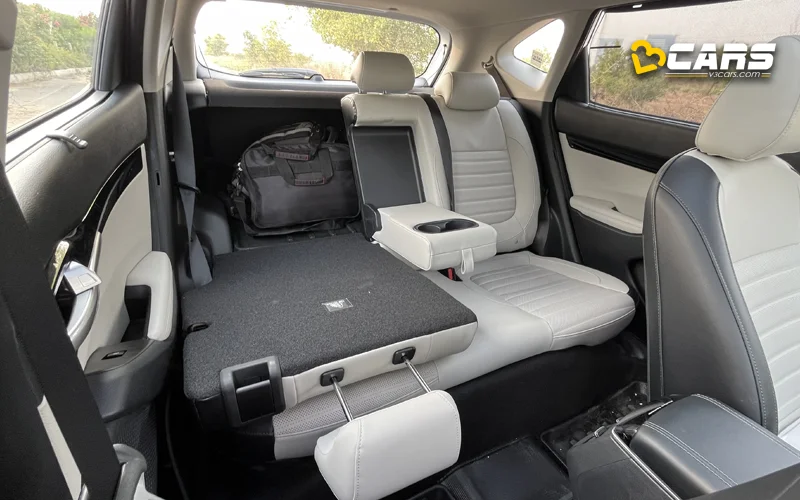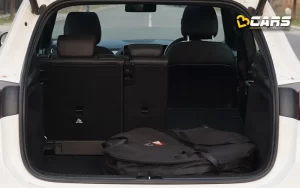
In this Feature Explained article, we’ll present the most detailed analysis of 60:40 split rear seats. We’ll list out the pros and cons, explain how it works, provide the typical cost of getting 60:40 split seats installed from the aftermarket, and repair/replacement costs of this feature. Based on this analysis, we’ll suggest if you should have this feature in your next car or skip it.
What Are the Pros and Cons of 60:40 Split Folding Seats?
Here are some key points about a 60:40 split-seat:
- Flexibility: The main advantage is the ability to adjust the seating and cargo space according to the need. You can fold down either the larger (60%) or the smaller (40%) section, or both, to accommodate different combinations of passengers and cargo.
- Easy Access: In vehicles with a 60:40 split seat, it is easier to access items stored in the cargo area from the passenger area, especially when only one section is folded down.
The 60:40 split-folding seat has the following shortcomings or problems:
- Cost: Engineering 60-40 split folding rear seatbacks to bear the same amount of load in the middle as a single piece seat takes some effort. That engineering and manufacturing cost is then passed on to the customers in the form of higher ex-showroom price for the vehicle.
- Remains Mostly Unused: Since we rarely encounter a situation where we need to carry luggage and also use the rear seat for a passenger, the split folding rear seat backs remain unused for most of the ownership. This feature is a lot like ground clearance or boot space or 3rd row seats. You don’t need it until you need it. And when you need it, you absolutely need it.
What Is A 60:40 Split-Folding Seat?
A 60:40 split-folding seat is typically available in hatchbacks, SUVs and MPVs. Since sedans usually don’t have flip-down rear seat backs to accommodate larger cargo, they don’t get this feature. The 2nd row seats in a hatchback, SUV or MPV often fold down flat to accommodate larger cargo like a refrigerator, washing machine or a bicycle.
Since a sedan body style doesn’t allow you to haul large cargo. Still some sedans like Virtus and Slavia offer the 60-40 split folding rear seatback feature.
The ability to partially flip down one side of the seatback and still leave room for a passenger in the 2nd row seats makes this feature extremely useful when you end up in such a situation.
How Does 60:40 Split Seat Work?
A split-folding rear seatback has 2 parts — a larger 60% section and a smaller 40% section. Each section has its own release latch, allowing you to fold them independently. To use, you pull the latch on the desired section, folding it forward to create a flat surface and extend the cargo area. Each portion of the seatback has its own hinge/pivot point to enable this split folding mechanism.
What All Cars Get This Feature?
Most entry-level cars like the Renault Kwid, Tata Tiago, Maruti Swift and Hyundai i10 Nios don’t get this feature. However, some cars like the Hyundai Venue and Hyundai Creta have this feature as standard across all its variants, while others like the Maruti Ignis, Tata Nexon and Kia Sonet offer it only in their higher variants. Even the sedans like Volkswagen Virtus and Skoda Slavia offer this feature.
How Easy Is It To Install Or Replace The 60:40 Split Seats?
If your car offers this feature as an option, it is possible to have it installed, though it may require completely replacing the rear seats. In some cases where this feature is not available in lower variants, often, the mounting points for this are present in the platform. So, you can consider buying the seat backs of the higher variants and installing them in your. Although, you have to see if the split seat back mounting points exist before ordering the part.
In rare cases, where the feature is not available in any variant, such as in the pre-facelift Kia Seltos, some owners have successfully replaced the rear seatbacks. Since the Seltos shares its platform with the Creta, the rear seats of the Creta are a perfect fit and quite easy to install.
However, if your car does not have the mounting points, then installing a 60:40 split would require significant modifications, including welding to the rear seat housing and seats. This is not recommended, as it poses a safety risk to rear passengers in the event of a crash.
This feature rarely malfunctions, but in the event of a mechanical failure, it is easier to replace either the components or the seat itself. However, it’s worth noting that a complete seat replacement can be costly. For reference, Creta rear seats cost about Rs. 15,000 – 20,000 — including installation and labour costs.
Should You Buy A Car With A 60:40 Split Seat?
The 60:40 split is a convenient feature that often goes unnoticed. However, it provides significant flexibility for cargo capacity without any real downsides. If you think this feature is important for you and aligns well with your needs, then make sure to research and choose a model or variant that includes it beforehand because installing it post-purchase is either not possible or might need significant modifications.




